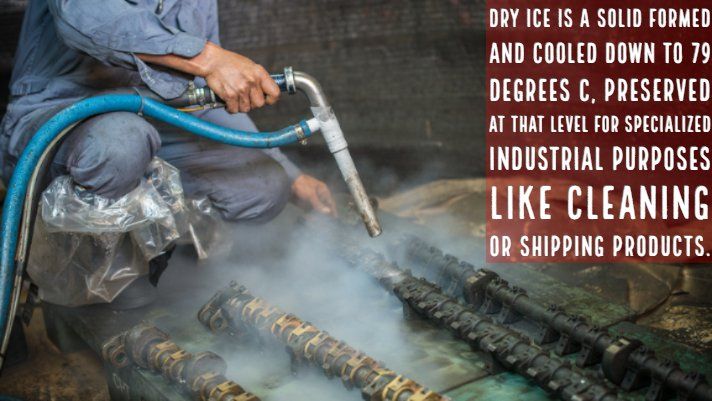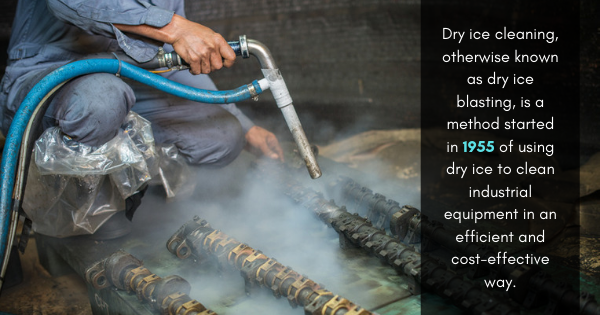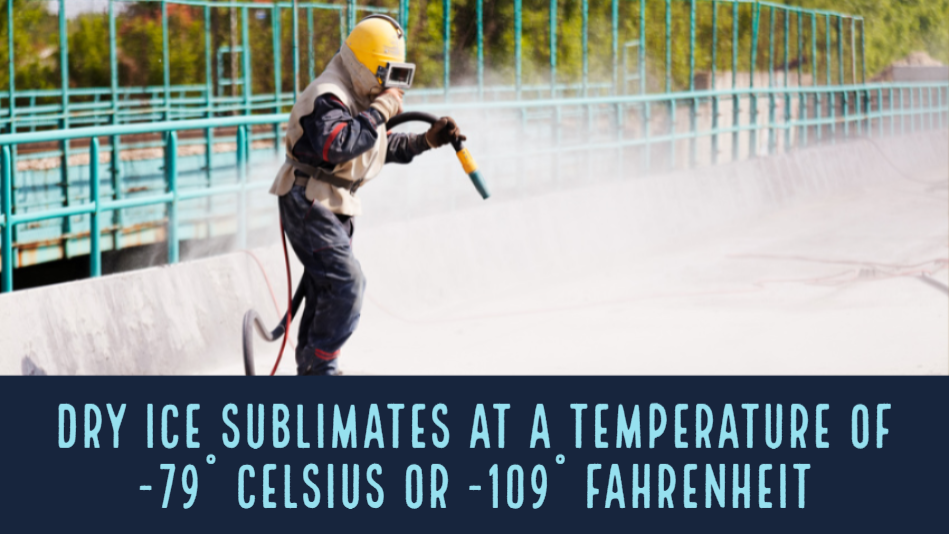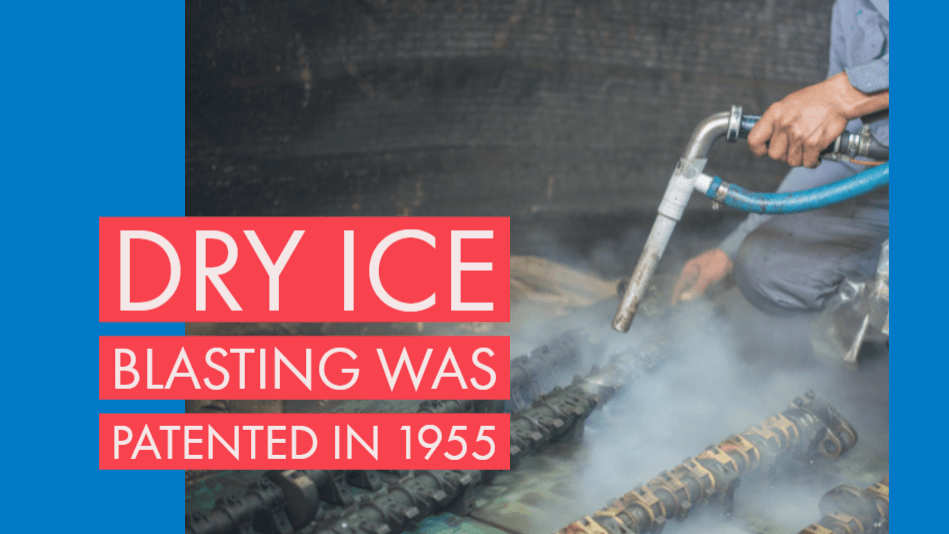



Perhaps you’ve heard of dry ice blasting and you want to know what it is or what it’s used for. If that sounds like you, then read on to learn everything you need to know about this effective practice.
What Is Dry Ice Blasting?
Dry ice blasting, also known as dry ice cleaning, is the process of spraying dry ice pellets through a hose at high pressures to clean surfaces.
Alternative blasting methods involve using sand, plastic beads, and sodium bicarbonate particles. Blasting these substances through a highly-pressurized, directed airstream causes them to rapidly clean and polish surfaces.
However, sand and other hard particles can cause abrasion to smooth surfaces, can contaminate a sterilized environment, and leave a mess behind that you have to clean up.
On the other hand, in dry ice blasting, the medium used is dry ice particles. Dry ice is non-abrasive, non-toxic, and evaporates in warm temperatures. So, instead of leaving particles behind to be cleaned up, dry ice particles simply disappear into the air after being used for cleaning.
Dry ice blasting is environmentally responsible, as dry ice is made from a byproduct of existing industrial processes and adds no greenhouse gases to the atmosphere. It’s even approved by the FDA, EPA, and USDA for cleaning purposes.
Dry ice blasting leaves behind no chemical residues and doesn’t create secondary waste. Dry ice is a solid form of carbon dioxide, which disappears into the air immediately as it comes into contact with the surface being cleaned. This is why there’s no cleanup of the blasting medium required after use, making it a much more convenient option than sand or sodablasting. Only the particles and residue cleaned off the surface have to be swept or mopped up.
How Does Dry Ice Blasting Work?
As pointed out already, dry ice blasting is a process involving propelling dry ice pellets at incredibly high speeds, with the aid of pressurized air. The pellets themselves are soft—much less dense than alternative mediums for blasting, such as sand and plastic.
Upon coming into contact with the surface being cleaned, the pellets sublimate almost instantly, transforming from their solid state to carbon dioxide gas. As they sublimate, minimal kinetic energy is transferred to the cleaning surface, producing only minimal abrasion. This process absorbs large volumes of heat from the surface area, which produces shear stresses as a result of thermal shock. This improves cleaning because the top layer of dirt transfers more heat than the layers underneath it, and flakes off easily.
The effectiveness and efficiency of dry ice blasting depends largely upon the thermal conductivity of the surface and the contaminant being cleaned off the surface. Additional to the process described above, the sudden change of state from solid particles to gas causes tiny shock waves, which may help remove the contaminant.
Equipment Used for Dry Ice Blasting
Dry ice used for cleaning can come in solid pellet form, or it can be shaved directly from a large block of dry ice. Shaved dry ice is less dense and more delicate than dry ice pellets.
Pellets can be made by compressing dry ice snow, or by freezing liquid CO2 in pellet form. Pellets made by compressing snow break apart more easily, which makes them less aggressive and effective for cleaning.
Dry ice must be kept at a temperature of -79 degrees Celsius, so it has to be insulated at all times, or it will evaporate back into gas. Depending on the effectiveness of the insulation used, dry ice sublimates at a rate of 2-10% per day.
There are two basic systems for dry ice blasting—single-hose systems and two-hose systems. Single-hose systems are more aggressive than two-hose systems because particles are accelerated to faster speeds using just one hose.
Two-hose systems (which were developed before single-hose systems) operate similarly to a suction feed abrasive blast setup. Compressed air comes in through one hose, and dry ice pellets are sucked in through another, via the Venturi Effect.
Hopefully this article has answered any questions you had regarding the makeup and function of dry ice blasting systems.





Contact Us
For more information on mobilization and/or scheduling:
Call or text: 469-406-1542
All Rights Reserved | Interstate Carbonic Enterprises | Website by Olive Street Design